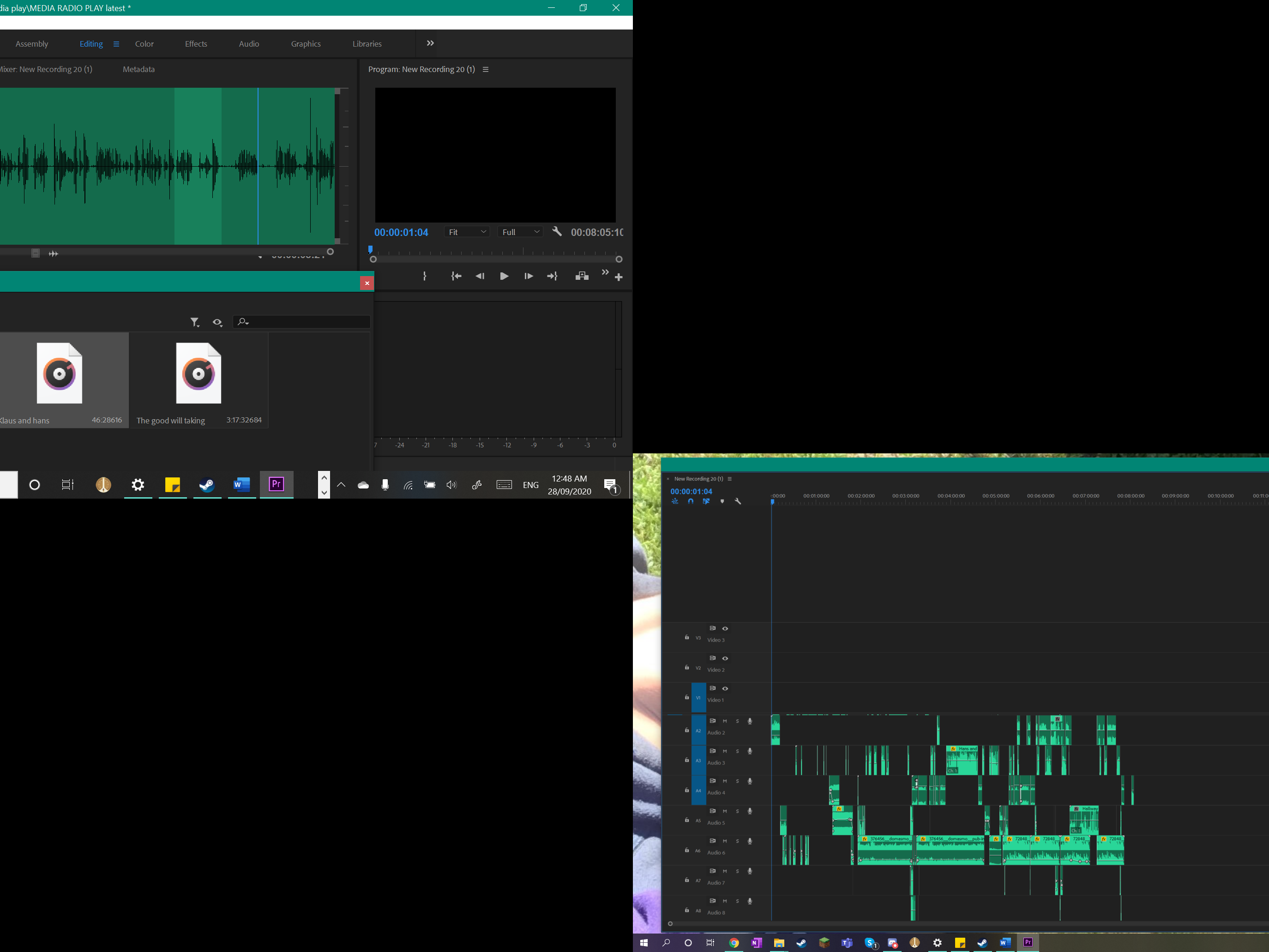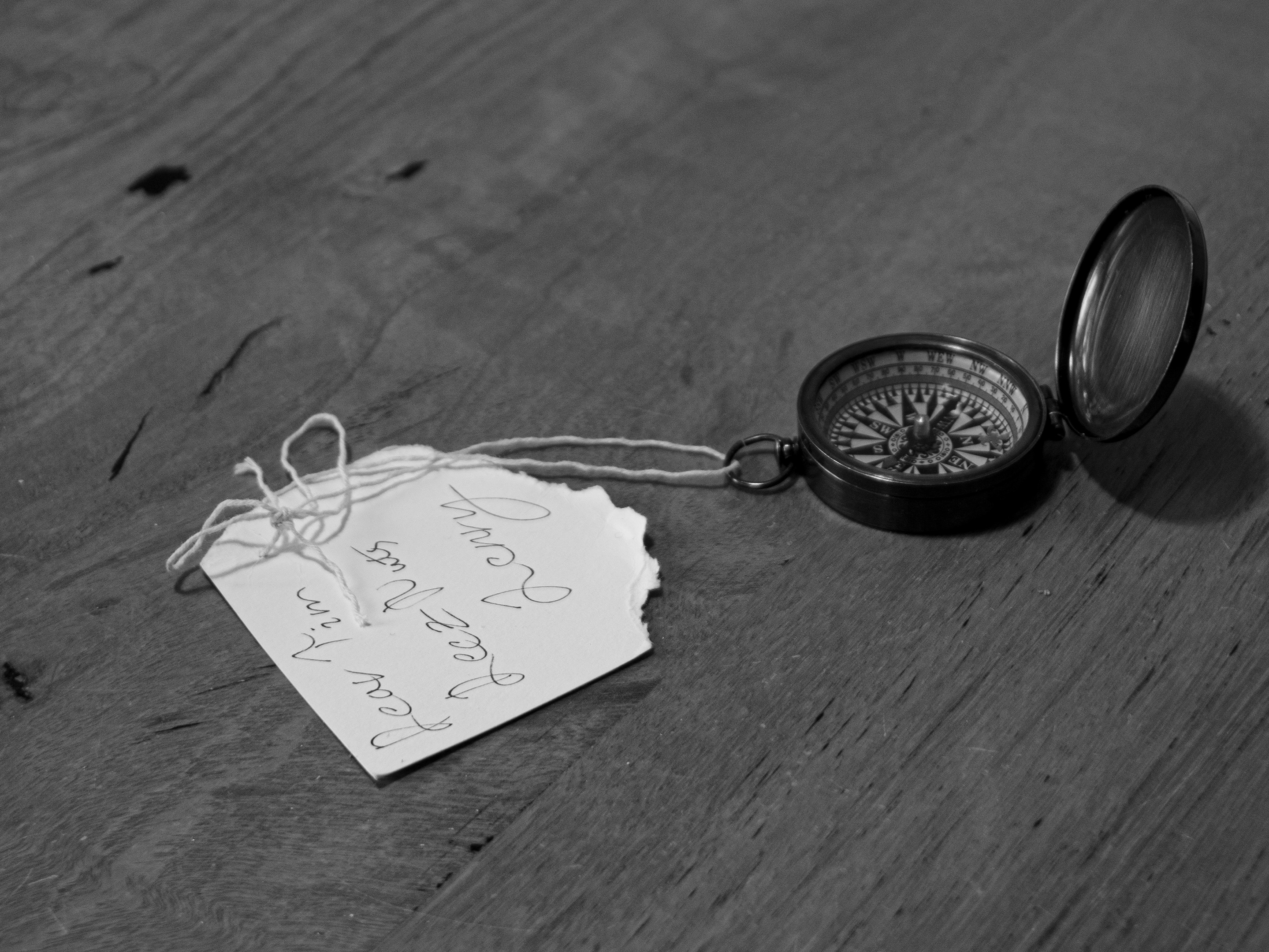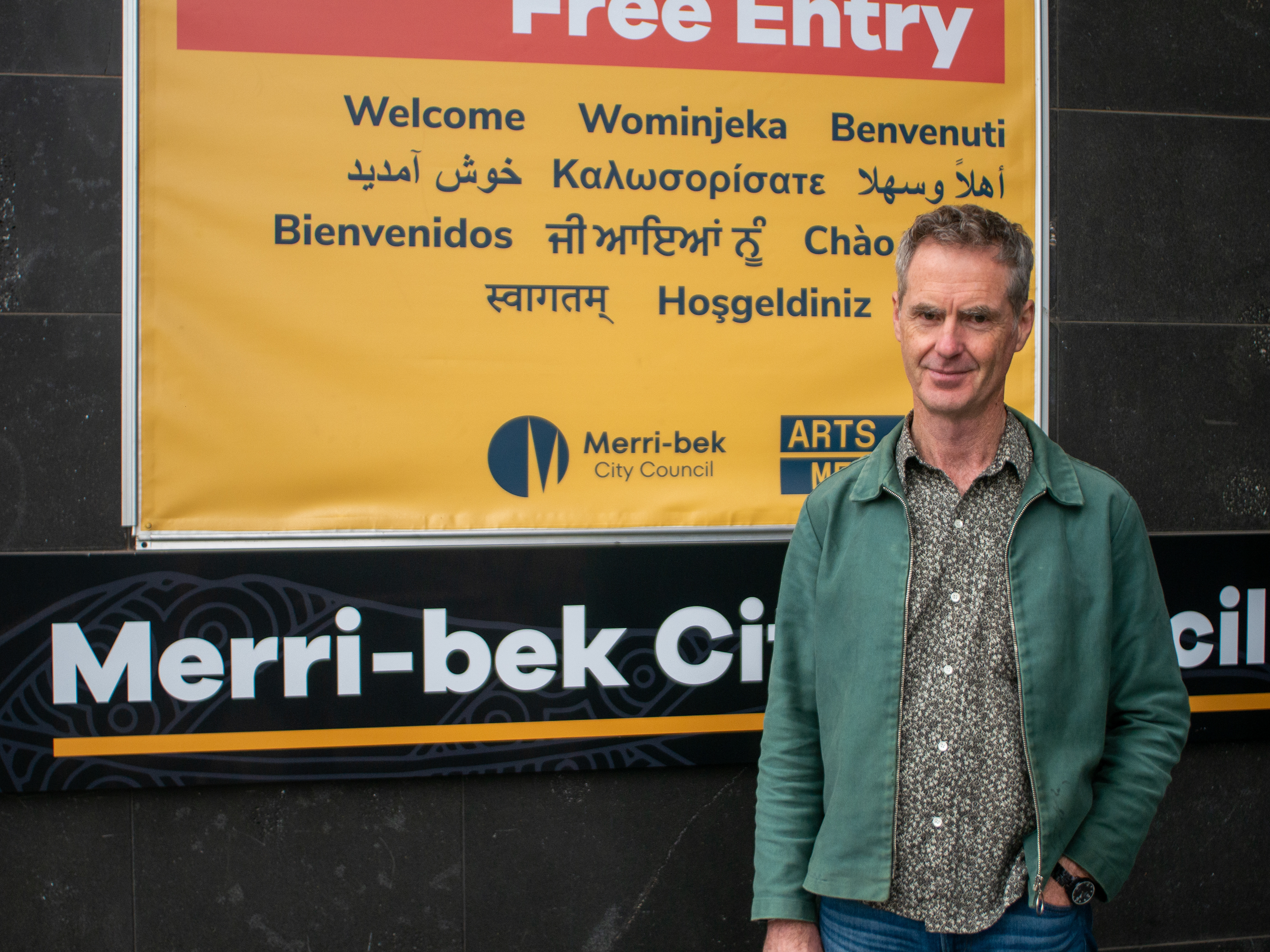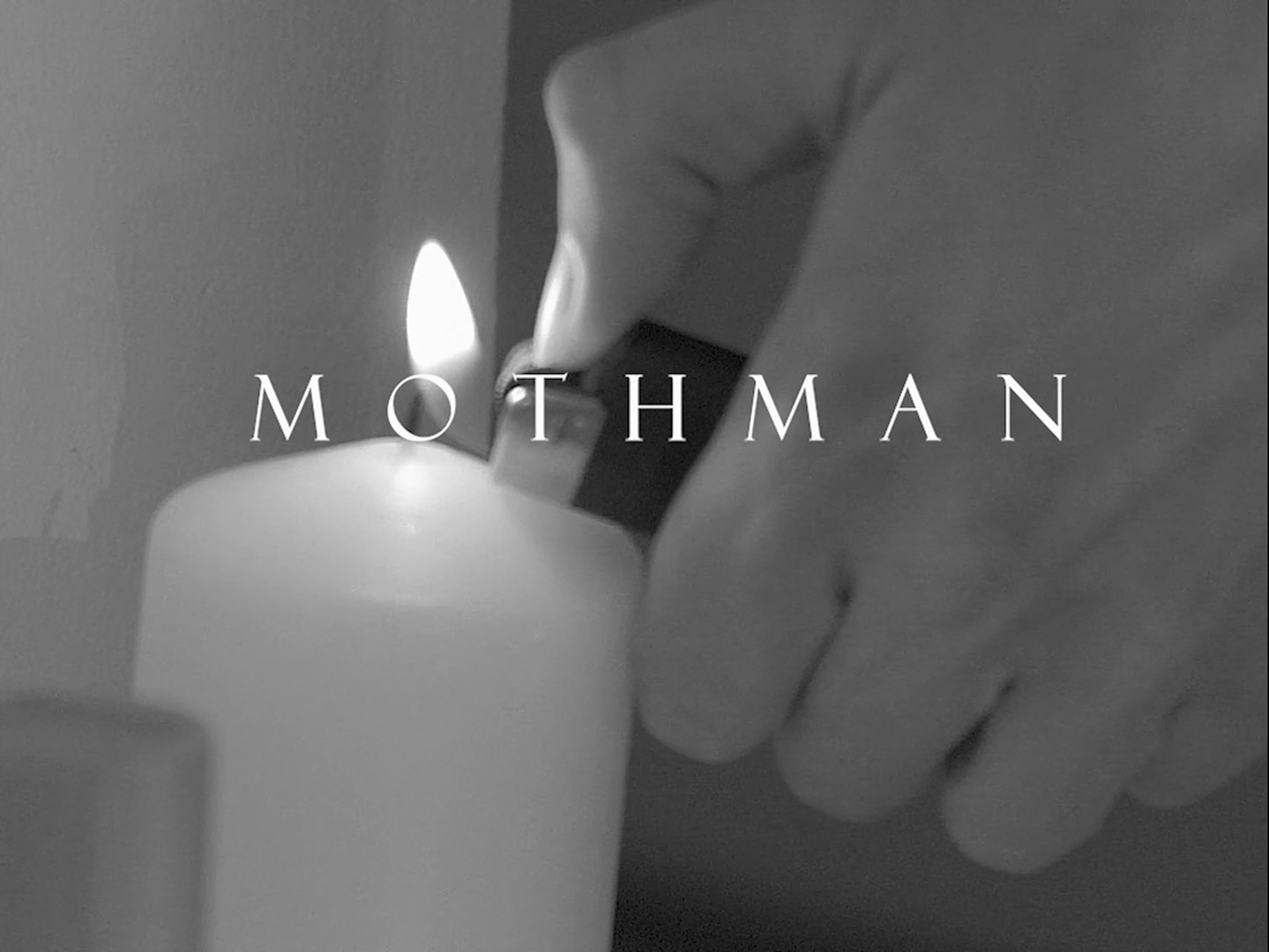Tutorial response Tim Augier 103611764
Week 4
What were two points that stood out about this reading?
Two points that stood out to me in this days readings were the digital divide and the democratisation of media. The way in which, as technology is developed and evolved, the gap between people unable to keep up with the technology and those who can adopt it, not only akin to but intertwined with the gap between rich and poor, and global north and south. (O’Shaugnessy & Stadler. 2016, p. 110). The other concept, the democratisation of media, is almost counter to the former. It follows the widespread proliferation of media since the printing press, which, despite the digital divide, continued to increase in it’s spread through new technologies and media. Not just in access to information, but also in terms of distribution, as anyone with access to the internet can now be a producer. . (O’Shaugnessy & Stadler. 2016, p. 111-112)
What are hot and cool media
Hot and cool media are a way of associating media technologies with the scale of human and sensory interaction. The more we interact with a media and the more it has to offer us in terms of sensation, the cooler it is, and the opposite is true of hot media. Television, rich in the way it engages the senses, through sight and sound, and the way one can interact with it, through changing the channel, is cool.
In your own words what does technological determinism mean?
Technological determinism is the scholarly viewpoint that we shape our technology, and forever after it shapes us. A big proponent of this was Marshall McLuhan. Essentially it means that though humanity develops technology to begin with, it forever after guides how our society has and will evolve. The technology of the time evolving is what will cause society to itself evolve. Fire and agriculture are good examples of the theory. Though humanity created fire and agriculture, it is only through these technologies that society has evolved to where we find ourselves today. Indeed fire predates Homo Sapiens, and as such can be said to be directly responsible for our evolution as a species, if not just a society.
Marshall McLuhan and Raymond Williams famously disagreed about the power of media technology to shape society
What are their positions?
Marshall McLuhan was the proponent of technological determinism. He was a massive campaigner for both technological determinism, and the idea that the medium is the message, itself a technological determinist position. His idea that the medium, the technology, through which we receive a message is more important than the message, the content, that said technology broadcasts. The idea that the technology is more important than the message subscribes to technological determinism by insisting that the technology is important as how it is used is the real message and impactful part on society. Williams was a strong detractor of McLuhan. He thought that McLuhan’s ideas of technological determinism, indeed the concept as a whole was ignorant of the human aspect, without technological interference, involved in societal evolution.
Who do you agree with more?
I would say I find myself in between the two, as while I feel that more broadly, the technological determinism side is correct in a broader sense, eg homo sapiens evolving due to technological innovation of earlier humans, it does tend to ignore other elements at play in humanities evolution. Social and cultural reasons not dependant on technology are overlooked under the wide ranging idea of the technology’s supreme importance.
Week 5
What were two points from this week’s readings that stood out to you as particularly important and/or interesting
The ideas of projection and polysemic readings stood out to me. Audience projection being the way in which a reader subconsciously projects their own thoughts onto an artists object or a senders message (O’Shaughnessy & Stadler, p97) and polysemic readings being signs/messages, which obviously have more than one meaning (O’Shaughnessy & Stadler, p96)
Why so?
This interests me as it is the way in which both these meanings can achieve a negotiated reading, and yet one is the audience member subconsciously ascribing information that isn’t present and adapting a text to also fit to their own meaning, whereas the other is an author perhaps intentionally or not, choosing a message with an additional meaning, which can be interpreted without intention by a reader, thus achieving a negotiated reading through different means.
In your own words describe the difference between open and closed texts
an open text is one that is, whether with authorial intent or not, left open to interpretation, and vague as to its meaning. this is in contrast to a closed text, where the intention of the text, the authors message, is made very clear, and there is little room for interpretation, other than what it obviously presented. Though the two are stark opposites, there is a spectrum that sits between the two into which most texts fall, bearing aspects of both.
What are the three types of decoding Hall proposed.
Dominant-Hegemonic reading is first. This is a way of decoding a message wherein the reader accepts the message as how the sender intended it. A very closed manner, the reader is accepting the intent of the author. Negotiated reading, in which readers will recognise the message sent by the sender, but will adapt it to reflect the beliefs and interests which they have acquired, thus not entirely accepting the message, but adapting it to suit their needs and still recognising it. The final one is Oppositional/alternative readings, in which the reader actively disagrees with or refutes the message intended by the sender and inserts their own, alternative, message to that that the author put forward.
Briefly describe a media text you engaged with recently and reflect on your reading position in relation to it. (using terms/concepts) from the lectures so far.
A text I engaged with recently was Dario Fo’s Accidental Death of an Anarchist. I reread the play in book form. This play, though having open elements, is a very closed text, at times specifically breaking the fourth to directly address the audience in order to tell them the message, that being the continuing nature of fascism in Italian society. My personal reading was a dominant one, fully accepting of the authors message and I did not offer an opinion adapted to my own beliefs, as they aligned with the authors, nor did I reject their message.
Week 6
What were two points that stood out as particularly important or interesting from this weeks reading? Why so?
Two points that stood out were the concepts of the biological essentialist and the social constructivist. These two diametrically opposite theories on gender. The biological essentialist uses scientific information such as hormones and testosterone to inform their opinion that gender and sex are unambiguously linked and your bodies chemicals affect who you are as a person and the way you interact with society (O’Shaugnessy & Stadler 2016 p.313), Whereas the social constructivist uses scientific method to deconstruct how society and culture shape gender and the way it interacts with the society around it, and that it isn’t linked to sex (O’Shaugnessy & Stadler 2016 p.313). Whilst the former uses scientific evidence to support it, the later uses a scientific method to actively deconstruct the former argument. The former hides behind logic whilst the latter is logical.
Why is it important for mainstream media to represent diverse humans?
It is important for mainstream media to represent diverse humans, simply for the reason that if it doesn’t it will likely not accurately portray the society it is intending to represent, and thus will aid to prevent those groups from finding a voice. To a viewer, if their media contains few diverse groups they can go their life thinking that those groups are uncommon or unrepressed because their voice is never heard.
Is it enough for media to simply represent them or does there need to be certain types of representation?
Minstrel shows represent black people; they don’t represent them well. Representation needs to be, not specifically only positive per say, but realistic, and needs to act as a platform to elevate the lack of diversity, not just play off of stereotypes which do nothing but perpetuate hate and discrimination. Media representation can be for many groups, the only way their voice is heard and as such, when it is bad representation, it can be incredibly harmful, exposing generations to ideas which are false and misleading. Racial stereotypes, especially blackface and other imitations, are definitely at the extreme end of this, being harmful perpetuations of stereotypes, which somehow remain to this day, but bad representation can be a lot more nuanced and difficult to pick out then.
How is diversity being used in this ad? Is it cynical or authentic? or both?
Diversity in this ad is being used to sell lamb. I think it is attempting to be authentic, or at least that is what it is trying to display, however since, as aforementioned, its purpose isn’t to represent, but reach as many groups as possible to get them to buy lamb, it is important to look at it with a cynical lens. Lamb was a good meat for this ad as it is presumably the meat able to cover the most cultures (pork and beef are out). diversity is being used as a tool to say that Australians are diverse, its just how it is, no going back, but we all unite over shared interests (in this case lamb, despite the fact that several vegetarians were present)
What might this ad indicate about the representation of diversity in contemporary Australian media?
It is implying that Australian media is representative of all colours, abilities, sexuality and gender, and lifestyle choices (vegetarianism, religion, etc). it is interesting to point out however, that despite every diverse group under the sun being represented, there is still an obvious weighting in the favour of Caucasians. “Boat people”, asylum seekers from the last few decades are mentioned, and someone points out that everyone (First nations people excluded) is boat people. An interesting trend in Australian media to compare the plight of asylum seekers fleeing their home with the ‘plight’ of the British needing more land for people imprisoned for being poor. I think it represents a trend in Australian media for white, specifically British, to be represented a lot more warmly in terms of colonisation. They are welcomed onto Australia with the simple annoyance of one’s aunt they don’t like that much arriving at Christmas.
Week 7
What were two points from this week’s reading that stood out to you as particularly important and/or interesting
An interesting point is the way celebrities have changed to become much more open to the audience members due to social media (Van Krieken 2018 p.181). the other interesting point is how due to social media celebrity is much more open to anyone (Van Krieken 2018 p.184-185).
Why so?
Celebrity as a concept is dependent on fans, and the removal of larger corporate media such as films or television to elevate people to celebrity is an interesting. The idea that any idiot with an internet signal has the potential (albeit through a corporate media, but the access is easily much more attainable) to grow to celebrity status and have a reach in the hundreds of millions in some cases is an interesting idea considering the relatively recent nature of it, sure it started in the 90s (Van Krieken 2018 p.184) but it’s safe to say it didn’t take off until now. The way this social media has even affected traditional celebrities too, allowing them to be (in some cases) less managed by their managers and much more open to their fans. A good example of this is Captain Marvel star Brie Larson, an actor who literally runs a vlog channel as if she wasn’t a multimillion dollar celebrity in one of the largest franchises in ever.
What impacts do celebrities have on how you understand society and yourself?
I think celebrity are very important on how I understand society, as a great deal of my information these days could be considered to be from new wave celebrities, influencers. Even without knowing it they shape my political beliefs, opinions on things I don’t know or have had no opinion on, and choices in brand and purchasing. Thanks to the parasocial relationship of celebrity, though I am I aware of it, I cannot help but consider these people whose lives I am so exposed to and learn in detail as close friends, whose opinions on things I trust deeply even when they pre-empt it with “I have no idea what I’m talking about” or “this is a sponsored video, just to let you know”.
In what ways do you think celebrity culture has changed over the last few years? Why so?
Celebrity culture has changed in the last few years as due to social media the interactivity and thus the anonymity of celebrity has gone down. Coupled with the rise of non-traditional (influencer) celebrities, this has led to a change. No longer is a celebrity only heard or followed by fans at predetermined events, films and television shows, interviews, and such, but on twitter or Instagram. The celebrity has sacrificed privacy for voice.
Choose a celebrity text (e.g a magazine cover featuring a celebrity) and briefly describe it. Briefly analyse this text taking;
An ideological approach (symptomatic reading), A political economy approach
The text I have selected is the infamous cover of paper magazine 2014 featuring Kim Kardashian the one featuring her to one side spraying a bottle of champagne over her head and onto a glass placed carefully on her outstretched posterior. Another cover was featured with her shot from behind, taking off her dress, with full rear nudity. A political economy approach can be used to pull apart the rather simplistic view as to why the cover exists, sex sells. As a major celebrity, one not expected to appear fully naked in a magazine, and one who sets beauty trends for millions, nudity, and thus sex appeal, sell, even to people not interested in them, for sex creates scandal, as indeed it did, which sells more. A more nuanced approach can be taken by an ideological approach. Kim Kardashian become famous, whether it be by her own doing or not, by a sex tape made with her and singer Ray J. It was widely publicised at the time and remains one of the most viewed pornographic films of all time. It can be seen then that the thing which catapulted her to stardom, was a film out of her control which robbed her of control of her own sexuality and made it public. The nude photos in the magazine, professionally taken, can be seen as her reclaiming her sexuality, by publicising it on her terms. Standing up and saying she isn’t ashamed and that she is happy with herself.
In your own words explain what Bordieu meant by the three types of capital (economic, social, cultural)
The three types of capital, cultural, economic, and social, are ways in which we have capital, the equivalent of being wealthy or defining a class system that isn’t just limited to the amount of money you have, though money, economic capital, is one of them. the other two are social capital, who you know, what groups you’re a part of, nepotism, but also who you interact with, and their capitals, and cultural capital. Cultural capital is knowledge, skill, and qualifications, ownership. The more qualified or skilled you are, relating to culture, the more you should be able to dictate taste, so he says.
How does he break down cultural capital?
He breaks down cultural capital into three distinct categories. Objectified, Institutionalised, and Embodied. Objectified is how one might own an object which is considered to be ‘interesting’ or culturally important, these are, despite the name, subjective. Institionalised is how you can gain cultural capital by achieving an award, or qualifications in a particular area, an institutional, or formalised, official way of saying you are qualified or respected in the area you’ve received them in. embodied is how you yourself present yourself to others. How you think you are or how you would like to be seen.
What kinds of cultural capital do you have and why/how?
In terms of cultural capital, I have some institutionalised capital. I have a council award (Merri-bek Council), a high commendation for youth contribution, which I won for… youth work? I’m not really sure why I won it, but I suppose it grants me cultural capital in that it shows I know about youth and am committed to them?
What is your current favourite television show? What is it about it that makes it ‘good’ Why do you like it? Is there a context where it would be considered good taste and another where it would be considered ‘bad taste’? give specific examples.
I’ve been rewatching The Crown, re-binging. I don’t really know what it is that makes it good. The writing? The drama and the intrigue make it incredibly interesting to watch, and it’s basis in reality. For me the reason I like it is its aesthetic of the mid-20th century, as well as my own fascination with history and politics, which it covers almost exclusively. It is definitely considered good taste in my sort of middle class culture, especially one who consider it well written and filmed television, the equivalent of HBO, ‘it’s not tv’ and all that. Though people who prefer reality tv might dislike it. And it would probably be considered bad taste by people with the highest cultural capital. Like the royal family.
Week 9
Do we want media to ‘disappear’? why/why not?
Bazin certainly did. He thought that the goal of cinema was, as a live capture of video, to be as realistic as possible, and to capture life to its most true. He thought the objective nature of photography, and thus cinematography too, lends credibility absent from other art forms. Which I think is rubbish. These days everyone knows about faking photo and video, achieving realistic looking things falsely. The goal of media shouldn’t be to not be seen its so realistic. Otherwise, there is no room for interesting, unrealistic things.
When is realism not the goal of particular media texts. (Give specific examples)?
Realism is not the goal of many fantastical texts, or ones that subscribe to ideals found in epic theatre, and theatre of cruelty, as well as absurd and surrealist texts. The film The Holy Mountain by Alejandro Jodorowsky, is a surreal-fantasy, and features scenes too surreal and unrealistic for even dreams. The cast spent months doing spiritual exercises, and in preparation, Jodorowsky took lsd. The final scene of the film is a fourth wall breaking shot of the film crew, the final line being “goodbye holy mountain, real life awaits us.” The fact that it tells you it isn’t real, gives a clear example as to the goal of the film, at least in terms of realism.
In your own words, describe what is meant by media convergence
Media convergence is the process by which various forms of media, and the technologies around them, all turn into the same thing eventually, or rather imitation of themselves, until they’re all essentially telling the same story or doing the same thing.
What are some examples of converged media that you have engaged with lately? Be sure to note how they demonstrate convergence (i.e. what media forms/technologies do they merge)
YouTube is a good example. Or really any social media platform these days. YouTube started off as a video hosting platform, allowing anyone to post pictures to it. But now, like Netflix or patreon, depending on the quality behind the creator, you can become a paying member of a channel, and gain exclusive access to videos, like Instagram you can post photos on your Instagram channel, like TikTok you now have shorts, most of which are directly taken from TikTok, and from twitch you have live streaming. It is a converged mess of a product.
In your own words explain what Lisa Gitelman means in saying we should: ‘locate media at the intersection of authority and amnesia’.
Media is all around us and ever present in our everyday lives, but still not thought about and we don’t question the media that makes up our world. Similar in a way to the “medium is the message”. Stop thinking about the text as much as you think about the medium.
Bolter and Grusin: new media presents themselves as refashioned and improved versions of other media… no medium…. Seems to do its cultural work in isolation from other media, any more than it works in isolation from other social and economic forces’. What is an example of a recently released media/technology being sold as a new version of an older media/technology?
Sequels and reboots to films and television, that don’t further or alter the story in any significant way could be said to be new versions of old media. The 2019 film, The Lion King is a relatively good example. The plot is almost identical to the original 1994 film, aside from several songs changing, it is the same film, just live action. Its not even actually live action, its still animation, just realistic looking animation. There is a recent rush of Disney remaking animated film classics of theirs in live action, and usually they alter some part of the plot. Despite this these remakes are still new versions of old media. Even the original films, Aladdin, The Little Mermaid, Cinderella, to name a few, are all newer versions of older texts. Aladdin was included in the 1700s French translation of 1001 Arabian nights (it wasn’t in the original Arab story cycle but was still an old folk tale). The Little Mermaid is a Hans Christian Anderson book, and Cinderella can be traced back to the first century CE. Even the old media upon which the new media is refashioned is itself older.
Week 10
In your own words define modernism
A political and ideological movement from the start of the 20th century, which shaped and included many cultural and technological design elements and media. It wished to create a new society, rejecting the past in the wake of the horrors of the first world war and the economic collapse of the great depression. Modernism was modern. New interesting designs ergonomic in nature, functional over form.
What were the major fears stemming from Modernity
Fears can be the drastic change that occurred, the loss of job and life that were occurring at the outset of modernity. Large scale relocation from rural parts to cities occurred, and ways of life were changed. Fear of change. Fear of social upheaval.
What did some people think were the problems with modernism?
Major problems with classism is its capitalistic nature, its inherent birth from industry and the industrial revolution. Modernism is ergonomic, its form over function, its designed to work not to be nice. It is very, politically exploitative of the working class. To higher classes it produces capital and manifests itself in faster food and material goods, but it does so at the expense of low pay to the little guy.
What is an ‘Authentic’/Original piece you have seen?
I saw the terracotta warriors, at least some of them, at the NGV on tour.
Did it have an ‘aura’ as Benjamin claims? How so/why not?
it did seem to perhaps, that there was something interesting about them compared to everything else, that there was a sense of majesty and awe emanating from them as if they were the most important things in the room. But I don’t believe that that was because they were an interesting art piece, nor had meaning carved into the art, more so because they represent a colossal feat of engineering executed thousands of years ago. It is a look, a window into the past which gives something an aura to me, that infantilising sense that you are small compared to what has come before you.
Can Contemporary media creations have an aura? Why/why not?
I personally don’t feel an aura from many contemporary media works because for me it is generally from historic pieces that I get this aura. It is absent in modern creations, and it is present in modern recreations I don’t know are modern, until I learn they are modern. Thus, I can determine the aura I feel is posthumously ascribed upon learning of the age or importance of a piece, rather than actually reading it myself, and thus it is falsely created.
Why do we want a sense of authenticity
Because its more true and thus better for some reason. You want things to be real, because, when it’s an interesting thing which is real or fake, if its more real it is in a way more ‘magical’. It implies the world is full of interesting things and can be home to wonder, whereas if it is fake, or unreal, stories and artwork and artefacts lose their majesty, because they did not happen. They are not an example of an amazing thing happening in real life where it could happen to you, or you could see it.
What are the barriers towards achieving authenticity in media
When viewing an item, often a viewing experience can ruin the authenticity of the moment. The Mona Lisa, is behind a glass wall and is constantly viewed by tourists, a moment, which can ruin the supposed majesty one is meant to feel from looking at it.
Do some people not want authenticity in media? Why/Why not?
Definitely some people don’t want authenticity in media. that’s why something like fantasy or science fiction can sell. Sure you can say that it is written authentically, but the fact is it is still unrealistic in that is has fantastical elements, say a dragon, or an alien race. These are important because they offer escapism. If everything was authentic and real it would not be long before you were trapped in reality and the monotony of life.
Week 11
What were two points from the reading that stood out to you as interesting/important? Why so?
Two points that stood out tome as interesting, was firstly, the link between post modernism and Thatcherism (McRobbie 2003 p.2), and Feminism (McRobbie 2003 p.6).
The link between Thatcherism is important, as its important to realise how postmodernism can be seen to have grown out of a distrust of social theory, which the left academia, considered similar to Thatcherism. The distrust of social theory and modernism was read as a sequel to privatisation and conservatism (Mcrobbie 2003 p.5). The links to feminism are interesting too, as feminism can be seen to emerge greatly from modernity, the attack on modernity that post modernism seems to be is seen to unravel feminism by some McRobbie 2003 p.7). however woman and womanhood still are able to fit into postmodernism theory, and in some ways, especially inclusivity and non-white women. (McRobbie 2003 p.7)
In your own words define post modernism.
Post modernism is many things, manifesting itself in aesthetics, periods of time, a way of thinking and ideology, but it is at its core a critique of modernism itself. A look back, in hindsight, or applied concurrently.
What are the differences between modernism and post modernism
Modernism is very uniform, very mainstreamed, everything is functional and form is sacrificed for this factor. Everything is very much anti individual in that it’ll work if everyone works together attitude. Post modernism is a critique of that, a reversal, after the fact. Individual ideas and aesthetics, uniqueness is prioritised. Style and form take precedence over function. Satires and pastiches and critiques of modernism and other things are rife in post modernism.
What is a metanarrative? Can we really do without them?
Metanarratives are overarching narratives that allow us to contextualise individual pieces of data or information. They are the way we rationalise things in our life that are happening by attaching them to a broader issue or story. This can be bad and good. Its important to realise that metanarratives can help us unlock the issues that plague our society by realising that many problems for instance are the result of governmental issues. However they cannot be what they are, a cover all for every single problem, life is just more nuanced then that. Otherwise you start saying that this one fickle excuse is the reason everything exists, and then you’ve got a religion.
Do we need binaries? Are they useful?
Useful for what? Gender, at least Men and Women, the two most common genders, are performative. To some it might seem odd to understand these as performative as they are not performing, but one needs to stop associating sex and gender, physical attributes do not need to inform gender. That doesn’t mean they don’t or did. Gender as a social construct doesn’t mean it was come up with the other week, it means it is as it is now through the evolutionary process of our society, different things associated with people slowly building up this concept of the two major genders, which were tied to sex. Physical attributes definitely informed gender in the past, and much of our modern understanding of say being a woman or a man is from them, masculinity and femininity, but that doesn’t mean they should continue to do so, or that they always did. People might be confused by this, for example how could you tell a woman giving birth that she is performing? Well giving birth is not a gendered by its nature. We heavily lay gender upon the act as a society, but when it comes down to it, it is an intensely primal act which is physical, not to do with gender. That doesn’t mean it doesn’t factor into how we are informed of our modern understanding of gender, merely that the two things are not inseparable.
Is your own identity postmodern in some way?
I like to think I have a very unique aesthetic and style compared to many people around me, one which definitely prioritises form over function, however it is still informed by historical ideas of function, specifically the time of modernity. I critique the establishment and often prefer pastiche and satire and criticism of modernity and its values, so I would consider myself at least partially postmodern. Definitely more so than modern.
References
Bourdieu, P 1986, ‘The forms of capital’, in Handbook of theory and research for the sociology of education, Greenwood Press, New York, pp. 241–257.
McRobbie, A 2003, 'Introduction'. in Postmodernism and popular culture, Routledge, New York, pp. 1-10.
O’Shaughnessy, M & Stadler, J 2016, ‘Feminism, post feminism, and ideologies of femininity’ & ‘Ethnicity, ideology, and the media’, in Media & society, 6th edn, Oxford University Press, Victoria,
O’Shaughnessy, M & Stadler, J 2016, ‘Implications of new media’, in Media & society, 6th edn, Oxford University Press, Victoria.
O’Shaughnessy, M & Stadler, J 2016, ‘Texts, meanings, and audiences’, in Media & society, 6th edn, Oxford University Press, Victoria, pp. 87–99.
van Krieken, R 2018, ‘Celebrity in cyberspace: Micro-celebrity and globalization’, in Celebrity society: The struggle for attention, 2nd ed, Routledge, New York, 179–198.
van Krieken, R, Habibis, D, Smith, P, Hutchins, B, Martin, G & Maton, K 2014, Sociology, 5th edn, Pearson, NSW









